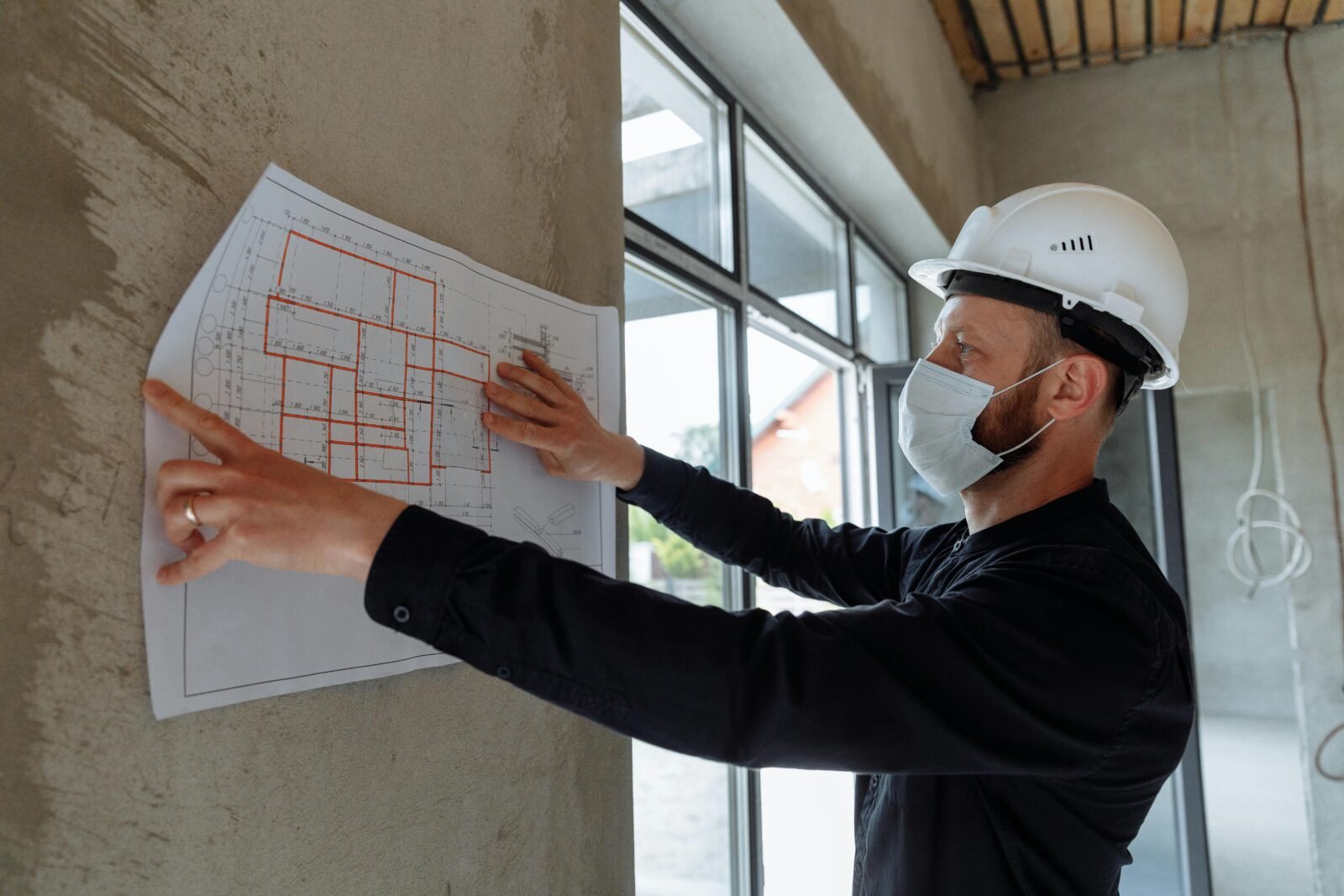
Table of Contents
- 1 Introduction to In-House Construction
- 2 In-House vs. Outsourcing
- 3 Establishing In-House Construction
- 4 Managing In-House Construction
- 5 Challenges of In-House Construction
- 6 Choosing Contractors: A Biblical Guide
- 7 Entrepreneurship and Building in Scriptures
- 8 Mitigating Construction Risks
- 9 Insurance Strategies for Construction
- 10 Conclusion
Introduction to In-House Construction
In-house construction companies have emerged as a significant trend in the construction industry. This model involves a business managing its construction projects internally rather than outsourcing to external contractors. By having a dedicated team, companies can exert greater control over project timelines, costs, and quality standards. However, while the benefits are appealing, overcoming the challenges that may b there is crucial.
Understanding the intricacies of establishing and managing an in-house construction team is crucial for any organization considering this route. One primary advantage is the ability to foster a cohesive team culture, enabling better communication and collaboration. This often leads to more efficient project execution and enhanced accountability. However, with these benefits come notable challenges. Companies may face issues related to resource allocation, skill gaps, and the need for ongoing training.
Furthermore, the complexities of project management can become overwhelming without the right strategies in place. It is essential to recognize that maintaining an in-house construction team requires a significant investment of both time and resources. Leaders must be prepared to overcome the challenges of an In-House construction company while also capitalizing on the benefits, ensuring that their construction ambitions align with broader organizational goals.
As we delve deeper into this topic, we will explore the distinctions between in-house construction and outsourcing, outline the steps necessary for establishing a successful in-house team, and address the various challenges that may arise. This comprehensive examination will provide valuable insights for those looking to harness the full potential of in-house construction.
In-House vs. Outsourcing
In-house construction refers to the practice where a company utilizes its own employees and resources to manage and execute construction projects. This approach allows firms to maintain a high level of control over the construction process, ensuring alignment with company standards and objectives. Conversely, outsourcing involves hiring external contractors to perform construction tasks, providing flexibility and access to specialized expertise that may not be available internally.
| Aspect | In-House Construction | Outsourced Construction |
|---|---|---|
| Cost | Higher ongoing costs due to salaries and benefits, but potential long-term savings | Generally more cost-effective, especially with lower labor costs in certain regions |
| Control | Greater control over project timelines and quality | Reduced control over management and execution |
| Skill Development | Encourages skill enhancement and knowledge building | Access to specialized skills without long-term commitments |
| Flexibility | Less flexibility in scaling resources | High flexibility to scale staff based on project needs |
| Communication | Fewer communication challenges due to in-house collaboration | Potential communication barriers and less visibility |
Each approach has its pros and cons. In-house teams foster skill development and maintain a strong alignment with company values. However, they can also lead to higher ongoing costs and potential employee burnout from overloading. On the other hand, outsourcing is often more cost-effective and allows for quick scaling to meet project demands, but it comes with challenges in communication and less control over project execution.
As the construction industry continues to evolve, many firms are finding that a hybrid approach—blending in-house and outsourced resources—can effectively address the challenges of modern construction projects. This strategy can provide the best of both worlds, balancing cost, control, and expertise.
Establishing In-House Construction
Building a successful in-house construction team requires careful planning and execution. By following a structured approach, organizations can enhance their operational efficiency and project outcomes. Here are the essential steps to set up an effective in-house construction team.
1. Proper Preparation
Before assembling your team, it’s crucial to understand your organization’s needs and vision. Reflect on past projects to identify successes and areas for improvement. Establish a clear budget, schedule, and functional requirements for your upcoming projects. For detailed guidelines, refer to this resource.
2. Define Team Functions
Clearly outline the roles and responsibilities of each team member. Typical roles include a construction manager, architect, engineer, and interior designer. Additional professionals like landscape architects may also be necessary, depending on project scope.
3. Start at the Beginning
Involve all key team members from the inception of the project. This fosters collaboration and allows for better decision-making as everyone works together from the start.
4. Foster Healthy Relationships
Encourage strong working relationships among team members. Trust and collaboration are essential for resolving conflicts and ensuring smooth project progression.
Necessary Skills and Resources
To effectively manage an in-house construction team, essential skills include:
- Project Management: Planning and overseeing construction projects.
- Communication Skills: Coordinating with all stakeholders.
- Problem-Solving: Quickly addressing issues as they arise.
- Technical Knowledge: Understanding construction methods and regulations.
- Leadership: Motivating and guiding the team.
- Budget Management: Efficiently managing project budgets.
- Safety Awareness: Ensuring adherence to safety protocols.
Additionally, effective resource management—covering human, material, financial, and equipment resources—is vital. This ensures that the right skills and materials are available at the right time, ultimately enhancing the success of each project. For more insights on resource management, check out this article.
Managing In-House Construction
Effective management of an in-house construction team is crucial for project success. Strategies that foster collaboration, communication, and strong leadership can significantly enhance team performance. Here are some key approaches:
- Establish Clear Roles: Define the responsibilities of each team member to avoid confusion and overlap.
- Encourage Open Communication: Create an environment where team members feel comfortable sharing ideas and concerns, ensuring everyone is on the same page.
- Implement Regular Check-Ins: Schedule frequent meetings to discuss progress, address issues, and adjust plans as necessary.
- Promote Conflict Resolution: Foster a culture of trust where conflicts can be addressed openly and constructively.
- Provide Continuous Feedback: Offer regular, constructive feedback to encourage personal and professional growth.
- Utilize Collaboration Tools: Leverage technology to facilitate communication and project management, keeping everyone connected and informed.
As a project owner, your leadership style can greatly impact team dynamics. “Leadership is not about being in charge. It’s about taking care of those in your charge.” Here are some tips to enhance your leadership:
- Lead by Example: Demonstrate commitment and professionalism to inspire your team.
- Be Approachable: Encourage team members to come to you with questions or concerns without fear of judgment.
- Empower Your Team: Delegate responsibilities and trust your team members to take ownership of their tasks.
- Recognize Achievements: Acknowledge hard work and celebrate milestones to boost morale.
By integrating these management strategies and leadership tips, an in-house construction team can operate more cohesively and efficiently. This sets the foundation for overcoming challenges and achieving project goals. For further insights on establishing an effective team, consider exploring step-by-step guidelines and resource management strategies that can enhance your operational efficiency.

Challenges of In-House Construction
In-house construction companies face a myriad of challenges that can hinder their operations and project success. One of the most pressing issues is the labor shortage, which significantly limits the availability of skilled workers. This shortage complicates hiring efforts, leading to delays in assembling teams for project completion.
Another challenge is the rising material costs and supply chain disruptions. Essential materials like lumber and steel have seen significant price increases, creating budget constraints and potential project overruns. Additionally, the pressure for faster construction times can exacerbate these issues, as builders are forced to work within tighter deadlines, risking quality for speed.
“Scope creep and change orders can lead to increased costs and delays, complicating project management.”
To tackle these challenges, companies can implement several solutions. Investing in training programs can help upskill the existing workforce and create a pipeline of talent through partnerships with educational institutions. Embracing technology such as cloud-based project management tools can streamline operations, enhance communication, and improve efficiency in project execution.
Moreover, developing clear procedures to manage scope changes and establishing a robust project management framework can mitigate the impact of scope creep. By identifying risks early and implementing effective preventative measures, such as safety training and hazard recognition, companies can create a safer and more productive work environment.
Choosing Contractors: A Biblical Guide
When selecting a contractor, it is essential to align your choice with biblical principles that emphasize honesty, integrity, and community support. One guiding principle can be found in Proverbs 11:1, which teaches the importance of honesty in all dealings. Choosing a contractor who values integrity ensures that they will be truthful about costs, timelines, and the quality of work.
“Without counsel plans fail, but with many advisers they succeed.” – Proverbs 15:22
This verse reinforces the need for wise counsel during your selection process. Gathering recommendations from your church community and verifying credentials can serve as a form of seeking wisdom, allowing you to make informed decisions. For more insights on this process, visit our Choosing Contractors: A Biblical Guide.
Moreover, supporting fellow Christians in their businesses aligns with the biblical principle of community, as noted in Galatians 6:2. By choosing a Christian contractor, you contribute to strengthening the faith-based community while fostering a positive working relationship built on mutual respect, as encouraged in Philippians 2:3-4.
In addition, Colossians 3:23 advises us to “work heartily, as for the Lord.” A contractor embodying this principle will likely demonstrate a strong work ethic and commitment to quality. By integrating these biblical teachings into your selection process, you can ensure that your choice reflects your values and leads to a successful project.
Entrepreneurship and Building in Scriptures
Construction entrepreneurship can find a solid foundation in biblical teachings. The principles rooted in Scripture offer invaluable guidelines for modern business practices. One significant teaching comes from Matthew 6:33, which emphasizes prioritizing God in all decisions. For entrepreneurs in construction, this means ensuring that projects not only aim for profit but also align with ethical standards and community needs.
For instance, a construction company could prioritize sustainable building practices, benefiting both the environment and the community. This approach resonates with the biblical principle of stewardship, reflecting a commitment to care for God’s creation.
“Commit thy works unto the Lord, and thy thoughts shall be established.” – Proverbs 16:3
This verse encourages business owners to dedicate their decisions to God, leading to successful outcomes. Operating with integrity, as highlighted in Proverbs 11:1, is crucial in the construction industry. Transparent communication with clients and honoring contracts without cutting corners can build trust, leading to long-lasting relationships.
Furthermore, fostering a workplace culture that values respect and fairness is vital. This mirrors the biblical teaching of treating others with respect found in Philippians 2:3-4. By cultivating such an environment, businesses can avoid unethical practices and promote accountability among staff.
In summary, integrating biblical principles into construction entrepreneurship not only fosters a thriving business but also enriches the community and reflects faith through work. These teachings guide entrepreneurs in making decisions that honor God and benefit society, ensuring a lasting impact.

Mitigating Construction Risks
In-house construction companies face a multitude of potential risks that can affect project outcomes. Understanding these risks is crucial for effective management. Some common risks include:
- Preconstruction Risks: Issues like inadequate bid management and poor Building Information Modeling (BIM) practices can lead to design errors and financial discrepancies.
- Project Execution Risks: Ineffective project management may cause delays and miscommunication among team members.
- Workforce Management Risks: Poor workforce planning can lead to labor shortages or overstaffing, impacting productivity.
- Financial Management Risks: Inaccurate project financials might result in budget mismanagement, causing significant cash flow issues.
- Construction Intelligence Risks: A lack of analytics may hinder informed decision-making and risk assessment.
To mitigate these risks effectively, consider implementing the following strategies:
- Preconstruction Management: Utilize tools for bid management and prequalification of contractors to identify potential risks early in the project.
- Project Management: Adopt robust project management practices, ensuring compliance with safety standards.
- Workforce Planning: Enhance workforce planning to minimize labor shortages and improve field productivity.
- Financial Oversight: Integrate accounting systems to manage project financials effectively, preventing budget overruns.
- Risk Assessment: Regularly conduct risk assessments to evaluate potential hazards and develop controls.
For example, a construction company implementing a comprehensive risk management plan noticed a significant drop in project delays. By focusing on effective project management and regular assessments, they could identify issues before they escalated, leading to smoother operations and increased profitability.
Insurance Strategies for Construction
When overcoming the complexities of an in-house construction company, understanding insurance options is crucial. Construction projects are inherently risky, with potential challenges including inclement weather, design changes, and unforeseen site conditions. Therefore, having the right insurance coverage can provide essential financial security and peace of mind.
Several types of insurance are vital for construction projects:
| Type of Insurance | Description |
|---|---|
| General Liability Insurance | Protects against third-party claims of property damage or bodily injury. |
| Workers’ Compensation Insurance | Covers medical costs and lost wages for employees injured on the job. |
| Builder’s Risk Insurance | Covers buildings under construction against damage or loss. |
| Contractor’s Tools and Equipment Insurance | Protects tools and equipment from theft or damage. |
| Professional Liability Insurance | Shields against claims related to errors in professional services. |
Choosing the right insurance is critical. Start by identifying risks associated with your specific projects, from construction defects to worker injuries. Understanding local regulations can also guide you in meeting required minimum coverages.
Engaging with insurance professionals or brokers can further assist in selecting appropriate coverage tailored to your company’s needs. They can provide insights into market rates and help overcome the complexities of different policies.
Ultimately, implementing a comprehensive insurance strategy is not just about compliance; it is a vital component of effective risk management in construction.

Conclusion
To overcome the challenges of an in-house construction company, several key points emerge as crucial for success. Establishing an in-house team provides control, consistency, and potential cost savings. However, it also presents challenges such as resource allocation, team management, and risk mitigation. Effective strategies for managing these challenges include strong leadership and clear communication, which foster a productive work environment.
Insurance plays a vital role in safeguarding against the inherent risks associated with construction projects. From general liability insurance to workers’ compensation, understanding the various types of coverage is essential. These policies not only protect your business from financial losses but also ensure compliance with local regulations.
Moreover, taking the time to identify and understand the unique risks your projects may face is indispensable. Engaging with insurance professionals can provide insights into tailored coverage that meets the specific needs of your construction endeavors. Diligence in planning, risk management, and insurance selection will ultimately pave the way for a successful in-house construction operation.
As you move forward, reflect on the importance of these foundational elements. Are you adequately prepared to face the challenges ahead? Consider consulting with experts and reassessing your strategies to enhance your operational effectiveness.
Join the Realty Banker Network and network and grow with us. Connect with us on
Youtube, Facebook, Instagram and Twitter. We hope to see you soon!


